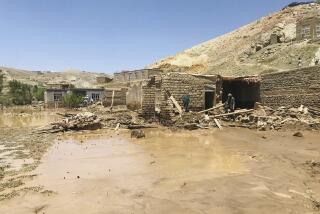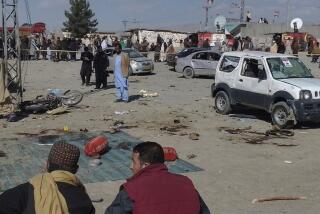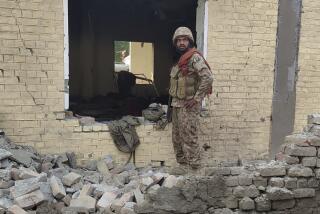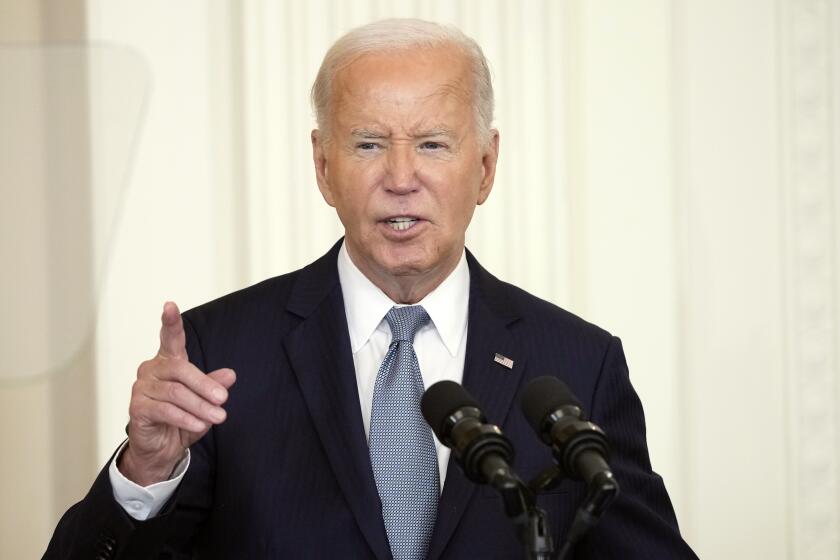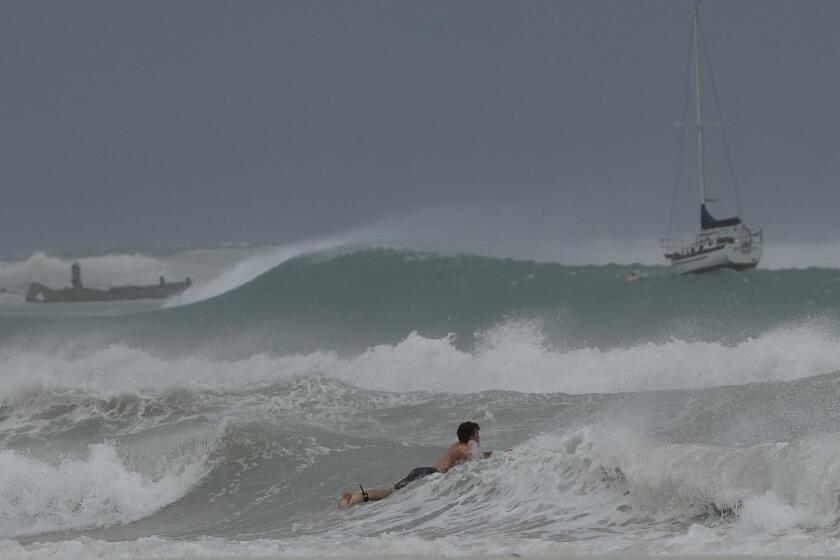Afghanistan suicide bomber kills district governor, 6 others
A suicide bomber killed a district governor and six other people Thursday in a northern province of Afghanistan that has become increasingly emblematic of the Taliban movement’s ability to strike far from its traditional strongholds in the south and east.
The Taliban claimed responsibility for the attack in the district of Chardara in Kunduz province, where the insurgency is well entrenched. A spokesman, Zabiullah Mujahid, called the slain official, Wahid Omarkhel, an “active member of the stooge government” who was closely connected to “foreign invaders.”
Assassinations like this one make it extremely difficult for the Afghan government to recruit and retain qualified officials in areas that are considered Taliban strongholds. Insurgents routinely send “night letters” warning those connected to the central government or the Western military to quit their jobs or risk being targeted.
Omarkhel was known to have cordial ties with NATO forces in the area and had been threatened previously, associates said. The U.S. Embassy condemned the killing, calling it a “senseless and cowardly act against a committed civil servant.”
Both the North Atlantic Treaty Organization and the administration of President Hamid Karzai say it is essential to extend the reach of government services in order to win people’s loyalty. But in districts such as Chardara, the insurgency has created what amounts to a shadow government, complete with Islamic courts and a system of tax collection.
The bomber managed to make his way directly into Omarkhel’s office, according to Abdul Rahman Aqtaash, the deputy provincial police chief, even though most ranking public servants observe stringent security measures. The six others killed in the attack were visitors, he said.
At midday, the receiving rooms of any official of Omarkhel’s standing are usually filled with tribal elders and various petitioners, particularly on a Thursday, the last day of the workweek. In addition to those killed, seven people were injured, police said.
The attack pointed up the difficulties the NATO force faces in trying to maintain stability in parts of Afghanistan where there are not heavy concentrations of Western troops. Most of the U.S. troops who arrived in the last year as part of the military buildup ordered by President Obama have been deployed in the south, considered the main Taliban stronghold, and in the east, near the Pakistan border, where fighters from the Pakistan-based Haqqani network are most active.
Kunduz province was relatively peaceful until about two years ago, but several different insurgent groups have since moved in, making it one of the more dangerous parts of the country and giving the Taliban a springboard for attacks across a wide swath of the north.
More to Read
Start your day right
Sign up for Essential California for news, features and recommendations from the L.A. Times and beyond in your inbox six days a week.
You may occasionally receive promotional content from the Los Angeles Times.
